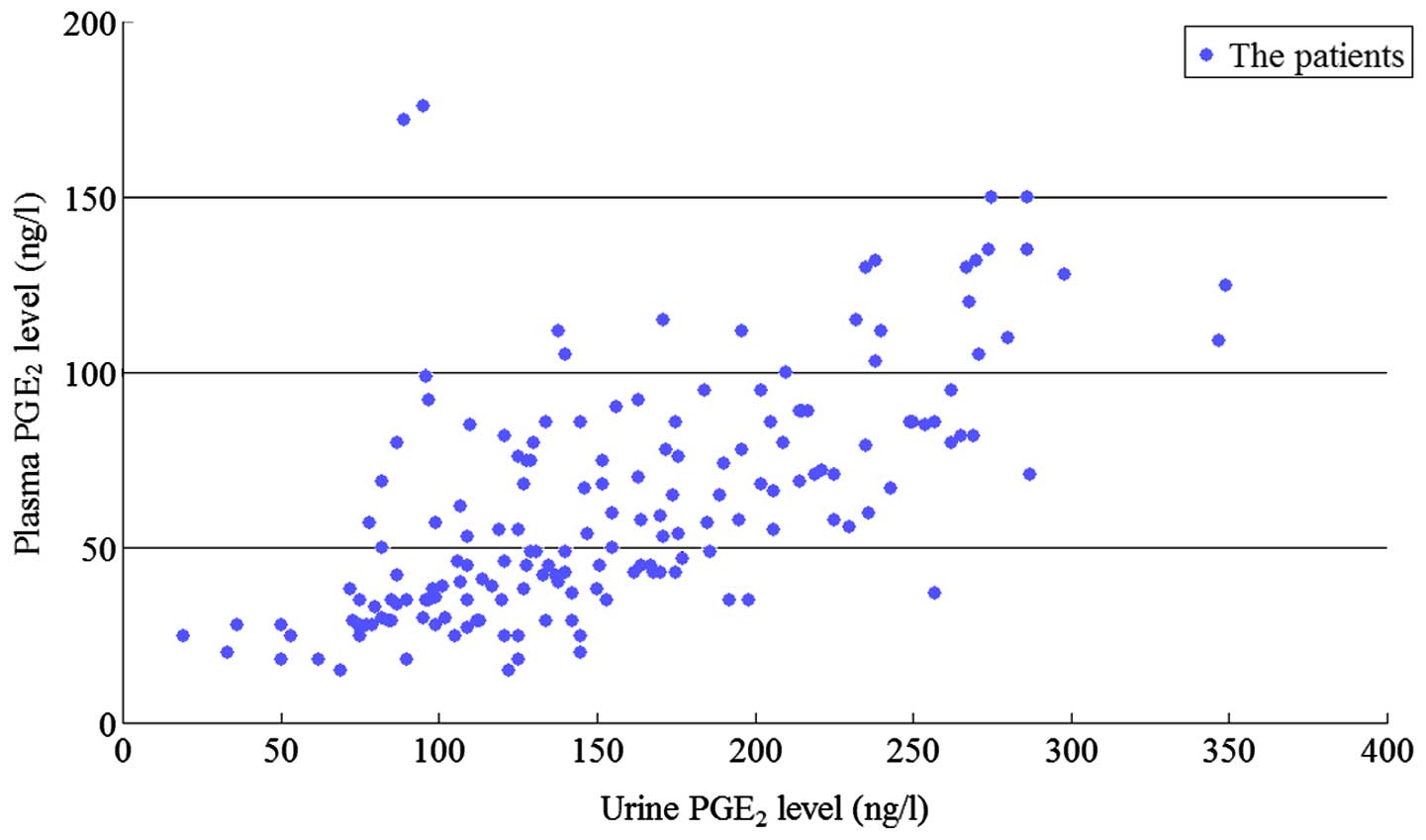|
1
|
Clyman RI: Patent ductus arteriosus in the
preterm infantAvery's Diseases of the Newborn. Gleason CA and
Devaskar S: 9th. Saunders; Philadelphia, PA: pp. 751–761. 2012,
View Article : Google Scholar
|
|
2
|
Hamrick SE and Hansmann G: Patent ductus
arteriosus of the preterm infant. Pediatrics. 125:1020–1030. 2010.
View Article : Google Scholar : PubMed/NCBI
|
|
3
|
Pacifici GM: Clinical pharmacology of
indomethacin in preterm infants: implications in patent ductus
arteriosus closure. Paediatr Drugs. 15:363–376. 2013. View Article : Google Scholar : PubMed/NCBI
|
|
4
|
Antonucci R, Cuzzolin L, Arceri A, Dessì A
and Fanos V: Changes in urinary PGE2 after ibuprofen
treatment in preterm infants with patent ductus arteriosus. Eur J
Clin Pharmacol. 65:223–230. 2009. View Article : Google Scholar : PubMed/NCBI
|
|
5
|
Gao X, Hei M, Yang B, Zhu H, Zhang QG, Lei
HG and Ren Y: The changes of plasma prostaglandins E2 at
pre- and post-treatment in preterm infants with patent ductus
arteriosus. Chin J Heart Heart Rhythm. 3:102–108. 2015.
|
|
6
|
Hammerman C, Bin-Nun A, Markovitch E,
Schimmel MS, Kaplan M and Fink D: Ductal closure with paracetamol:
a surprising new approach to patent ductus arteriosus treatment.
Pediatrics. 128:e1618–e1621. 2011. View Article : Google Scholar : PubMed/NCBI
|
|
7
|
El Hajjar M, Vaksmann G, Rakza T, Kongolo
G and Storme L: Severity of the ductal shunt: a comparison of
different markers. Arch Dis Child Fetal Neonatal Ed. 90:F419–F422.
2005. View Article : Google Scholar : PubMed/NCBI
|
|
8
|
Chandrasekharan NV, Dai H, Roos KL,
Evanson NK, Tomsik J, Elton TS and Simmons DL: COX-3, a
cyclooxygenase-1 variant inhibited by acetaminophen and other
analgesic/antipyretic drugs: cloning, structure, and expression.
Proc Natl Acad Sci USA. 99:13926–13931. 2002. View Article : Google Scholar : PubMed/NCBI
|
|
9
|
Graham GG, Davies MJ, Day RO, Mohamudally
A and Scott KF: The modern pharmacology of paracetamol: therapeutic
actions, mechanism of action, metabolism, toxicity and recent
pharmacological findings. Inflammopharmacology. 21:201–232. 2013.
View Article : Google Scholar : PubMed/NCBI
|
|
10
|
Shetty N, Patil AK, Ganeshkar SV and Hegde
S: Comparison of the effects of ibuprofen and acetaminophen on
PGE2 levels in the GCF during orthodontic tooth
movement: a human study. Prog Orthod. 14:62013. View Article : Google Scholar : PubMed/NCBI
|
|
11
|
Walker KS, Matheson PJ, Galganski LA,
Garrison RN and Downard CD: Application of prostaglandin E2
improves ileal blood flow in NEC. J Pediatr Surg. 49:945–949;
discussion 949. 2014. View Article : Google Scholar : PubMed/NCBI
|
|
12
|
Dang D, Wang D, Zhang C, Zhou W, Zhou Q
and Wu H: Comparison of oral paracetamol versus ibuprofen in
premature infants with patent ductus arteriosus: a randomized
controlled trial. PLoS One. 8:e778882013. View Article : Google Scholar : PubMed/NCBI
|
|
13
|
Wu M and Wan J: COX-3: is it the target of
acetaminophen? Prog Physiol Sci. 41:40–42. 2010.
|
|
14
|
Le J, Gales MA and Gales BJ: Acetaminophen
for patent ductus arteriosus. Ann Pharmacother. 49:241–246. 2015.
View Article : Google Scholar : PubMed/NCBI
|
|
15
|
Allegaert K, Anderson B, Simons S and van
Overmeire B: Paracetamol to induce ductus arteriosus closure: is it
valid? Arch Dis Child. 98:462–466. 2013. View Article : Google Scholar : PubMed/NCBI
|
|
16
|
Oncel MY, Yurttutan S, Uras N, Altug N,
Ozdemir R, Ekmen S, Erdeve O and Dilmen U: An alternative drug
(paracetamol) in the management of patent ductus arteriosus in
ibuprofen-resistant or contraindicated preterm infants. Arch Dis
Child Fetal Neonatal Ed. 98:F942013. View Article : Google Scholar : PubMed/NCBI
|
|
17
|
Nadir E, Kassem E, Foldi S, Hochberg A and
Feldman M: Paracetamol treatment of patent ductus arteriosus in
preterm infants. J Perinatol. 34:748–749. 2014. View Article : Google Scholar : PubMed/NCBI
|
|
18
|
Sinha R, Negi V and Dalal SS: An
interesting observation of PDA closure with oral paracetamol in
preterm neonates. J Clin Neonatol. 2:30–32. 2013. View Article : Google Scholar : PubMed/NCBI
|
|
19
|
Ozdemir OM, Doğan M, Küçüktaşçı K, Ergin H
and Sahin O: Paracetamol therapy for patent ductus arteriosus in
premature infants: a chance before surgical ligation. Pediatr
Cardiol. 35:276–279. 2014. View Article : Google Scholar : PubMed/NCBI
|
|
20
|
Terrin G, Conte F, Scipione A, Bacchio E,
Conti MG, Ferro R, Ventriglia F and De Curtis M: Efficacy of
paracetamol for the treatment of patent ductus arteriosus in
preterm neonates. Ital J Pediatr. 40:212014. View Article : Google Scholar : PubMed/NCBI
|
|
21
|
Oncel MY, Yurttutan S, Erdeve O, Uras N,
Altug N, Oguz SS, Canpolat FE and Dilmen U: Oral paracetamol versus
oral ibuprofen in the management of patent ductus arteriosus in
preterm infants: a randomized controlled trial. J Pediatr.
164:510–514, e.1. 2014. View Article : Google Scholar : PubMed/NCBI
|















